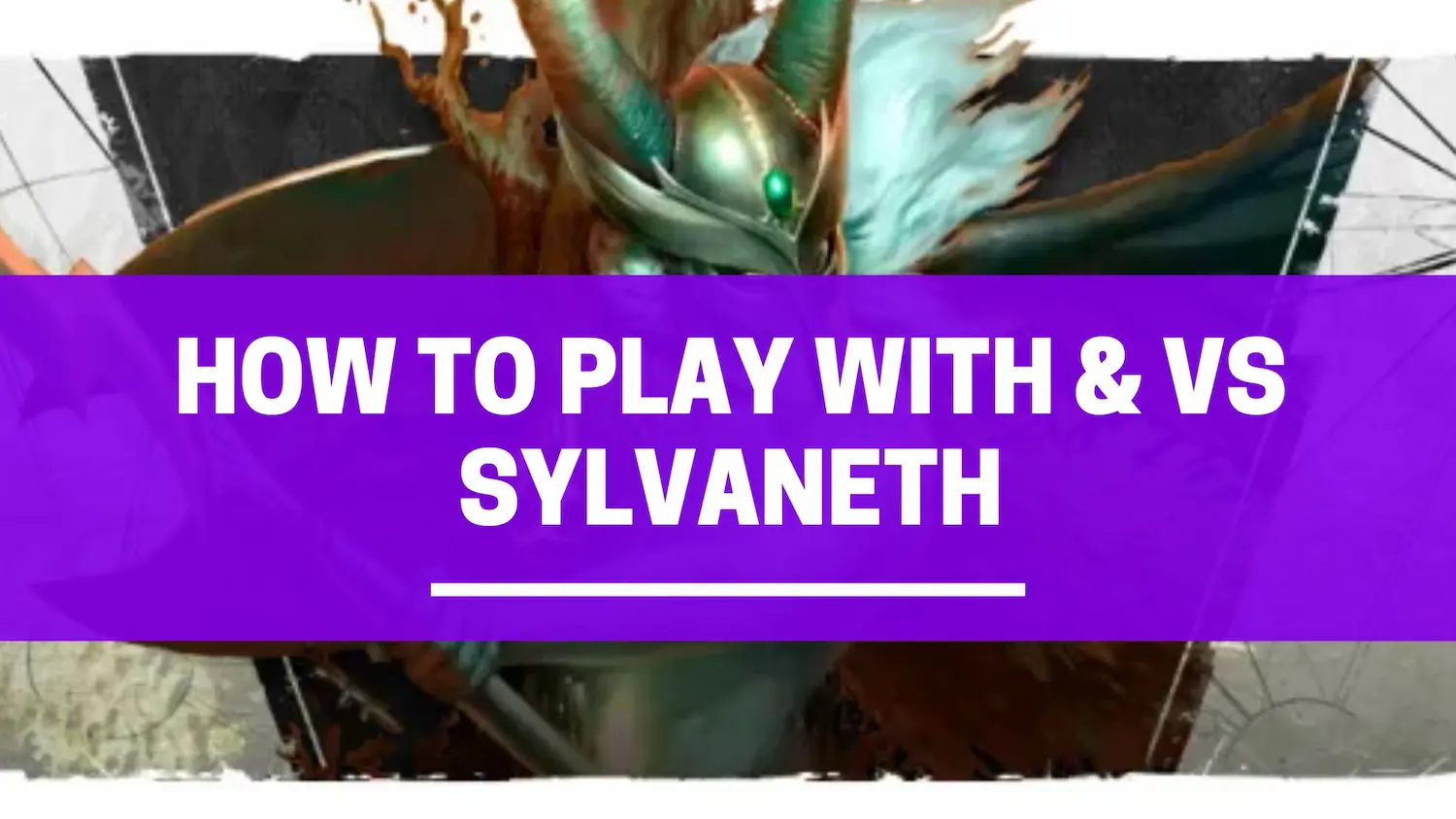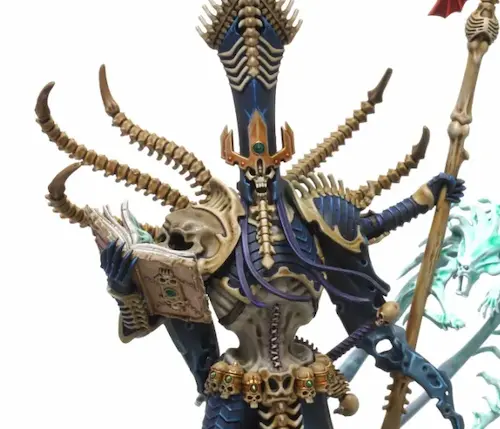One thing I particularly like about Warhammer Age of Sigmar is that each army has a very strong personality , which translates into a very specific type of game.
It is true that subfactions allow you to vary that style, and it is true that in all wargames each faction has its own personality. But the peculiarity of AoS, from my point of view, is that the variety provided by the subfactions does not affect the basic personality of the army (as it can happen in 40k, for example) and that the type of game or personality is much more extreme.
Thus, we can find armies that are totally based on shooting and others that don’t even have it (or have it but it’s anecdotal, like the Nighthaunt).
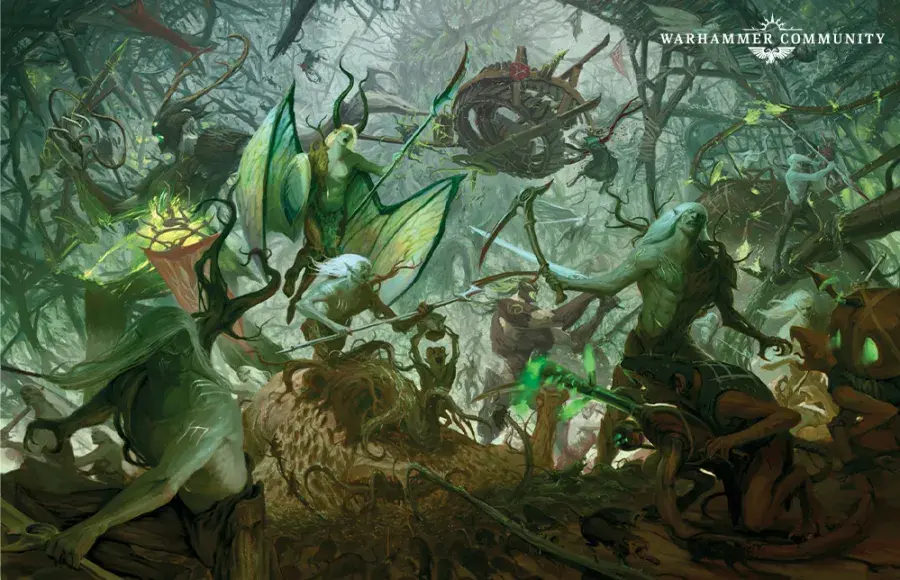
Sylvaneth is an army that hits very well and has good magic. At first it might seem that this provides a great tactical variety, but it has a drawback that marks their entire strategy: they have bad saves.
This is why the greener faction in the game can’t afford to hold out, like the Stormcasts would, for example, or charge as fast as possible, like the spooks might. This is an army that requires calculated movements and precise escapes, making it a faction that may not be ideal for players who are beginning or looking for a simple play style.
The army is, as we said before, quite technical, and despite what was mentioned above, within its strong personality it allows for a lot of dynamism.
Subfactions
The three most played are Heartwood , Gnarlroot , and Harvestwood .
- The first allows you to choose three units of the opponent so that you have a +1 to hit them. It is valid for attacks in combat and shot.
- The second turns the Seeker Revenants and Spearmen into Dracophates online . Reinforcing these units is very powerful, and they also have a pregame movement of 12”.
- For those more fond of magic, Gnarlroot is also an option . This subfaction allows you to cast a spell with 3D6 and select the two you prefer if you are within 9″ of a dense terrain element (your choice) or a forest.
War stations
Aside from sub-factions, you can also choose a war station, which is yet another rule layer.
Options are a 6 ward, reroll a cast or spread spell, +3 inches to teleport or move after hit, or finally reduce distance by 3 inches for terrain related abilities, but, in return, the 6 to hit within 6 inches of these exploding terrain features becomes two hits.
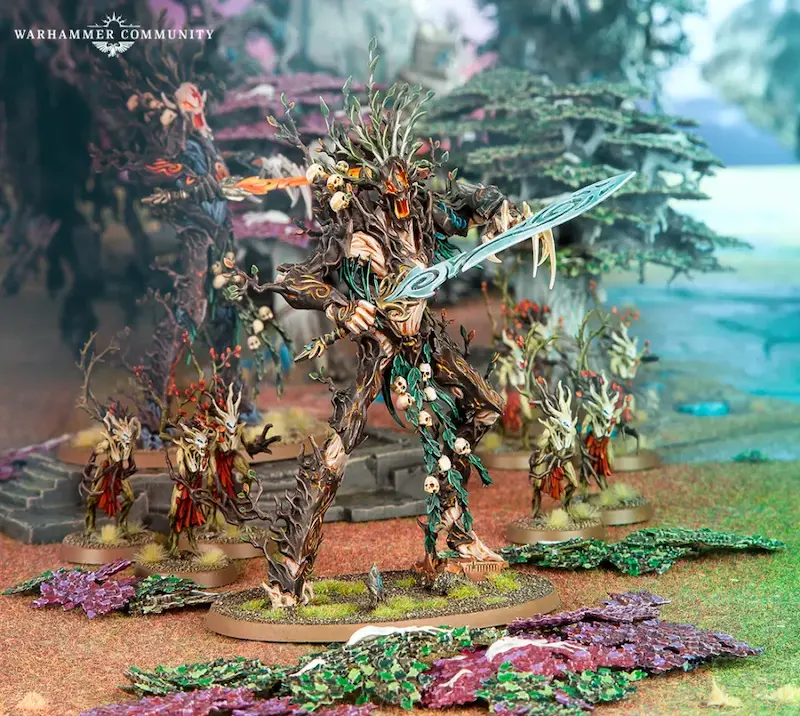
The terrain for Sylvaneth
At the beginning of the battle you can choose three terrain elements as bushy and, in addition, place a forest. These four terrain features are very important to the sylvaneth, as within 3″ of them units heal and gain buffs.
Once per turn, you can teleport a unit to one of these terrain features.
One of the most important rules in the book, if not the most, is that, also near these terrain elements, units can hit and then move , so your opponents won’t be able to respond to you. Using this rule well can give you victory.
It is, at the same time, a weakness, because an experienced opponent will block those terrain elements from you (if they are occupied by an opponent, they do not bring you benefits).
The heroes
- Alarielle is an exceptional miniature. Aside from her many virtues, among which her magic and her mobility stand out, she is able to turn all terrain elements into bushes , so they would all count towards the army’s abilities. As if this were not enough, she is resurrected. As she happens with all the so-called center pieces , the debate is whether they compensate her almost a thousand points, regardless of whether she is worth them or not, for everything she makes you give up.
- The Warsong Revenant has a very powerful spell. You roll a number of dice equal to the result of the casting roll for each enemy unit within 9 inches. On every 5+, the unit you are rolling for takes a mortal wound. Also, it is possible to improve the range of the spell. A real bomb.
- The Arch-revenant gives +1 wound to the Kurnoth, and this ability already makes it worth it. Also, he can give a command ability of +1 attack to a unit.
Units
The star line unit of the army is the tree-revenants . With their teleportation, they become a unit that helps you easily capture targets. In an elite army with few minis, it is a very important function.
Those known as crickets, that is, the Seeker Revenants and the Dracophate Spearmen , are two excellent units. Spearmen move a bit more, 14, and attack first whenever they charge. The good thing about these units is that if you don’t kill a whole mini, it heals itself. Therefore, you have to kill them completely.
The Kurnoth are the quintessential punching unit of this army. They save the 3+, 5 wounds each and with an enviable offensive power, with 3 base damage that you can buff with different dynamics such as magic and hero abilities.
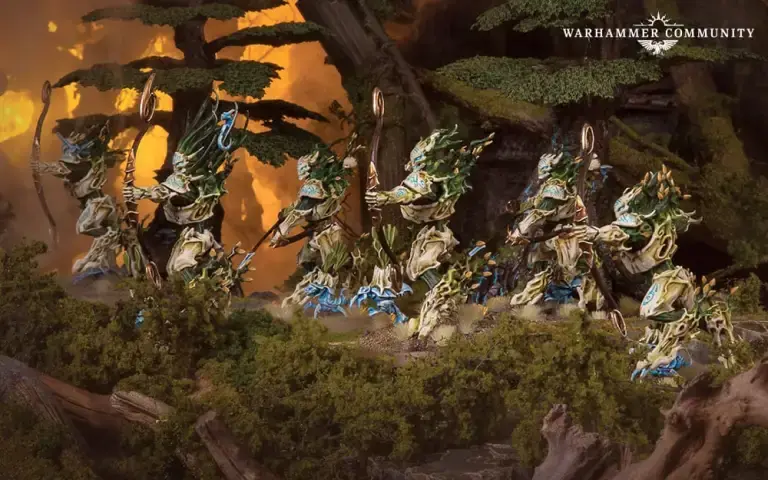
Play against Sylvaneth
We have already seen the benefits of the army: it has a lot of mobility, a lot of teleportation and the ability to make very strong attacks and avoid being hit, in addition to enjoying some considerably good magic. But what problems does Sylvaneth have? What are his weaknesses?
Magic, although it is one of its strengths, can also be a trap for this army . Many of his most effective combos depend on correctly casting the spells he carries. If the rival army has a good hand dispersing, or knows when to do it, it can truncate your strategy.
It is not an especially good army at points, since being very elite, with few, strong and expensive troops, armies that have a good balance between power and quantity or, directly, horde armies, can make it very difficult for them.
Conclusion
Sylvaneth is not an easy army to play, it requires a lot of strategy and mastering all the warscrolls , abilities and spells to get the most out of it. Of course, when you manage to get the hang of it, it can be truly frustrating for your opponent to see that his units are disappearing due to withering attacks from beings that come out of the undergrowth as quickly as they leave.
A very background skill that delights expert players.

